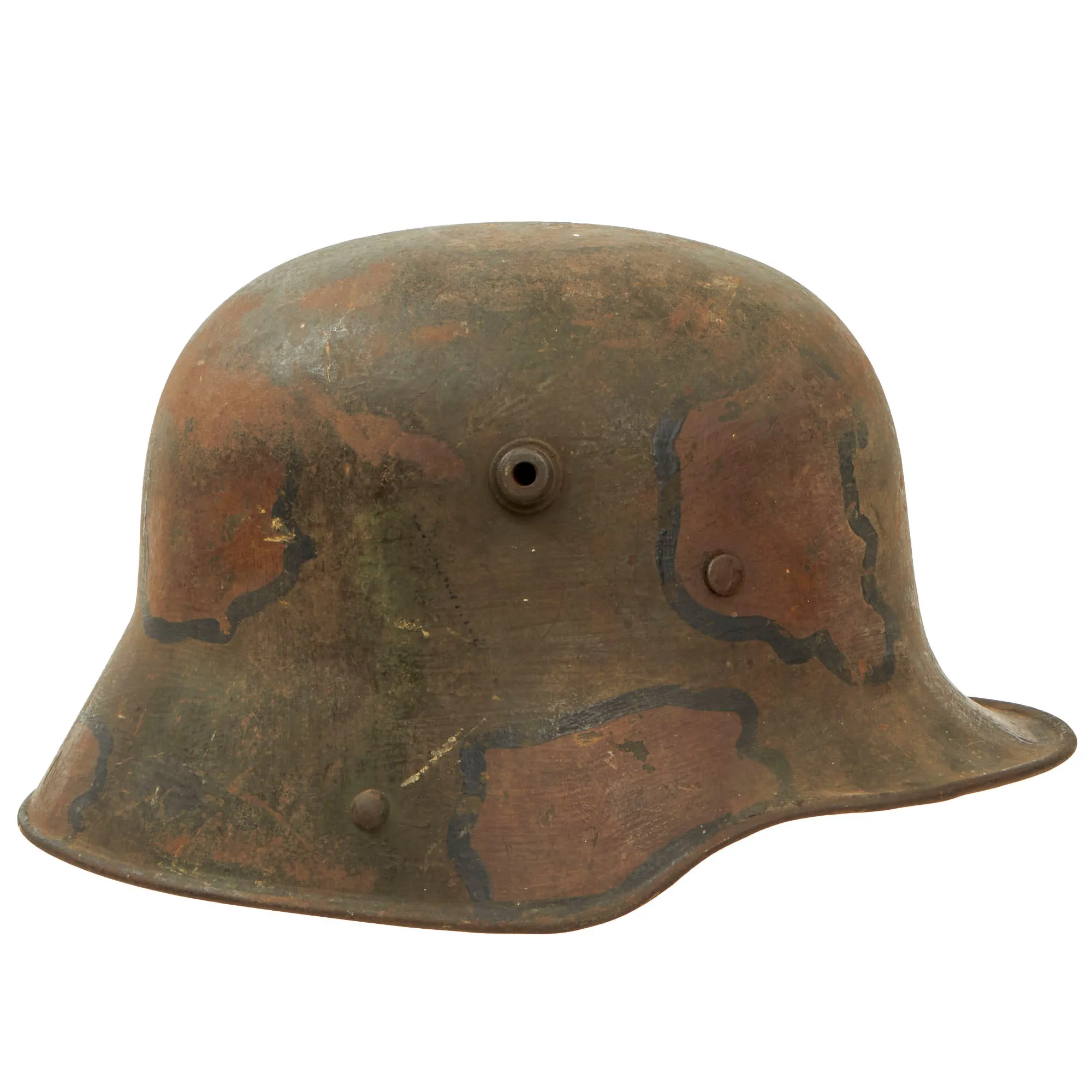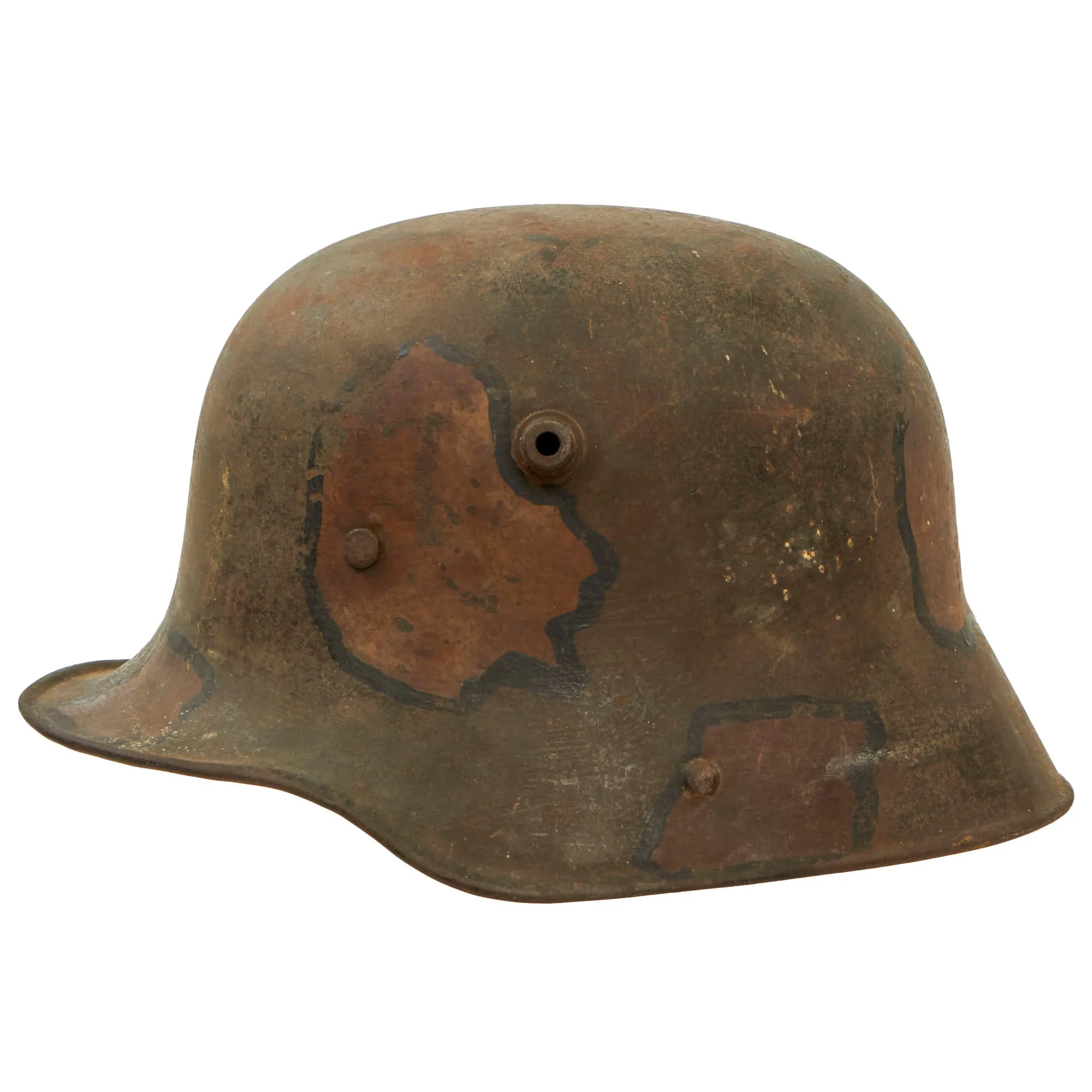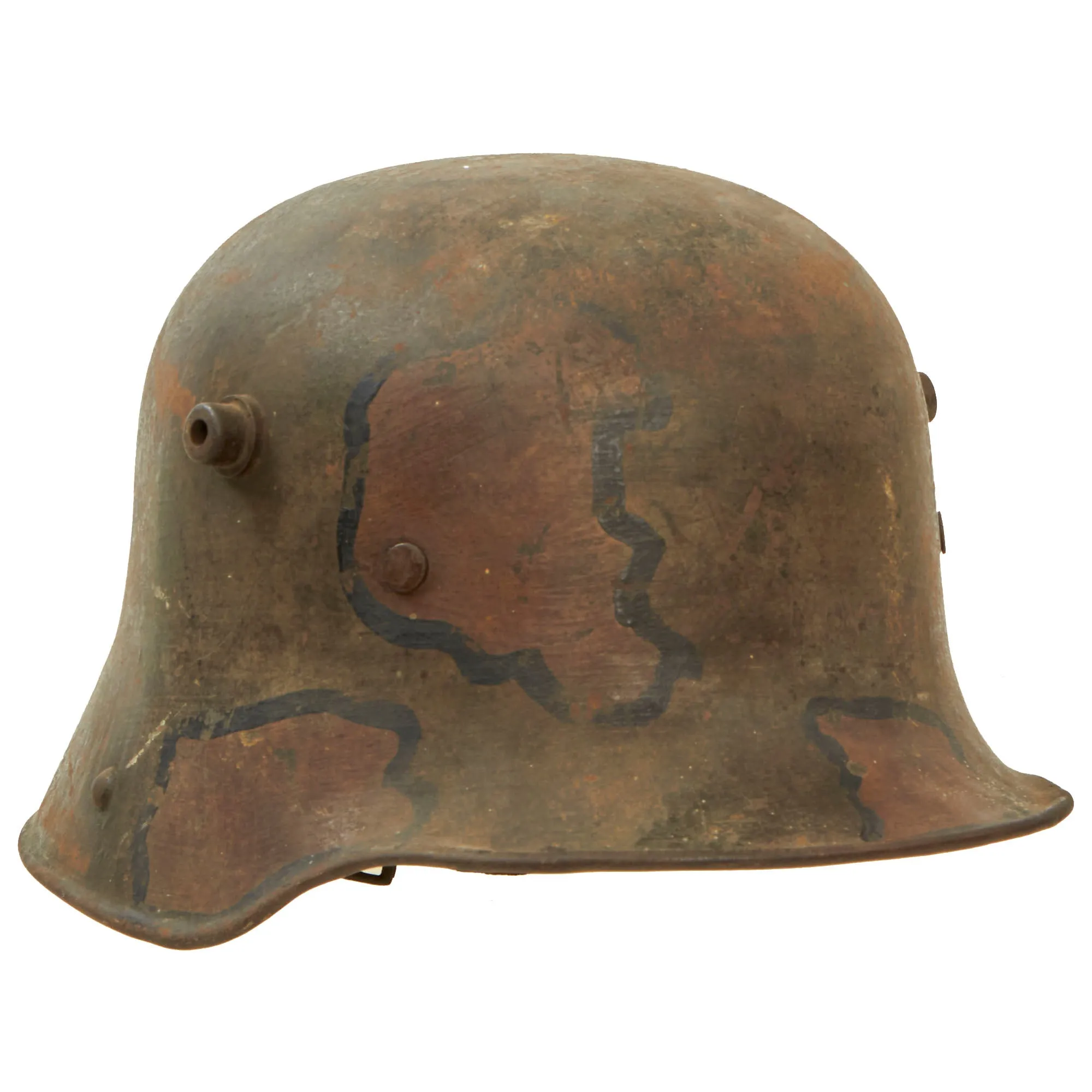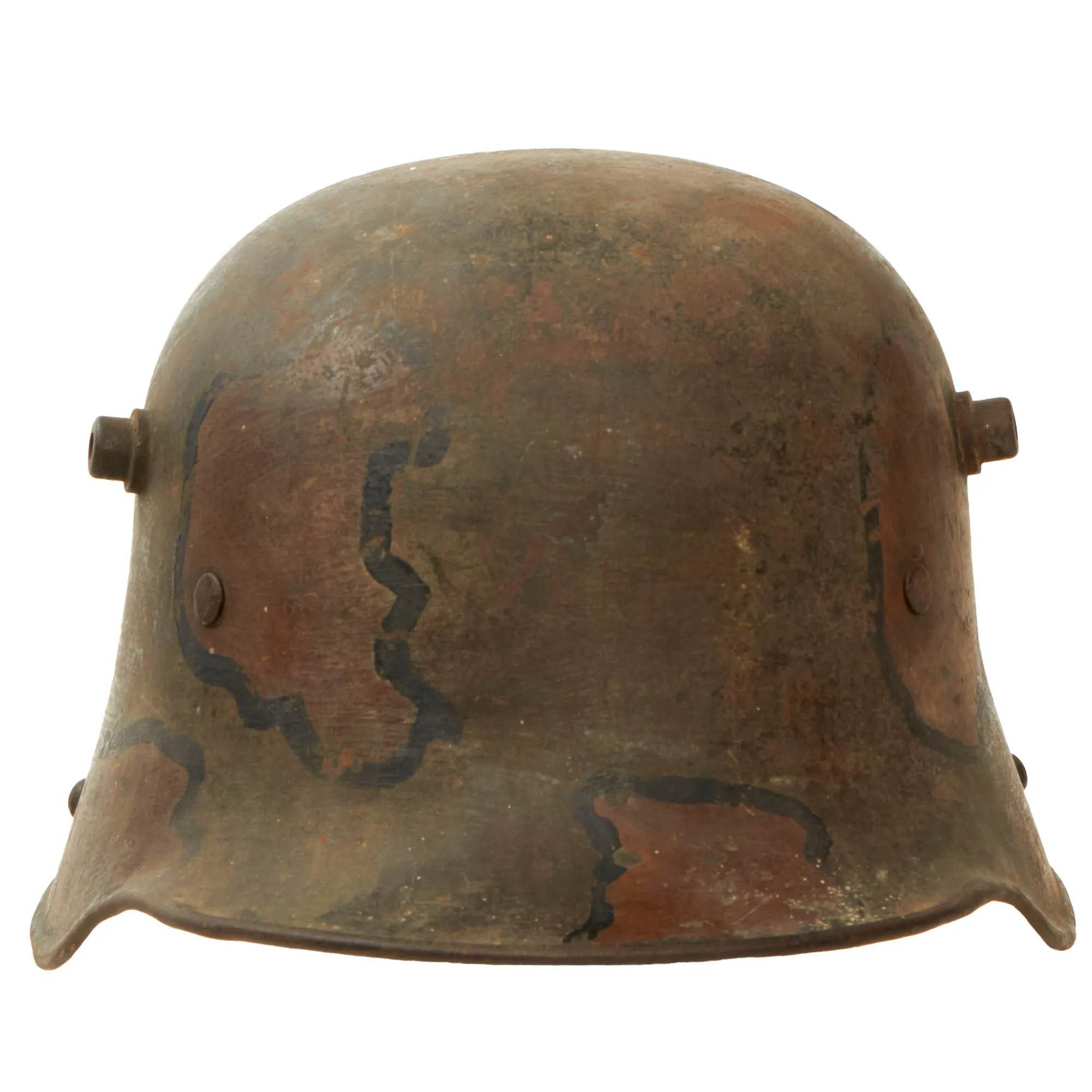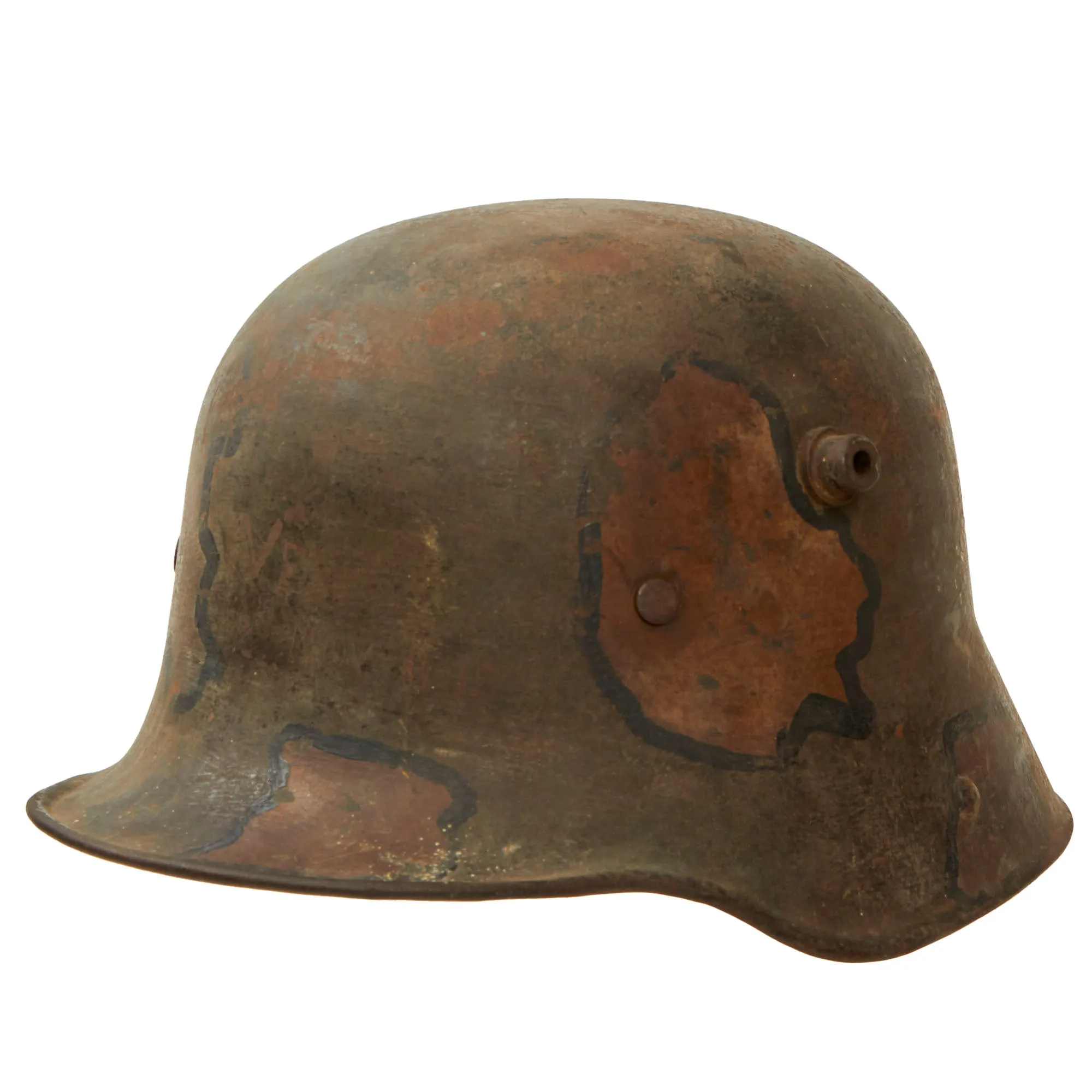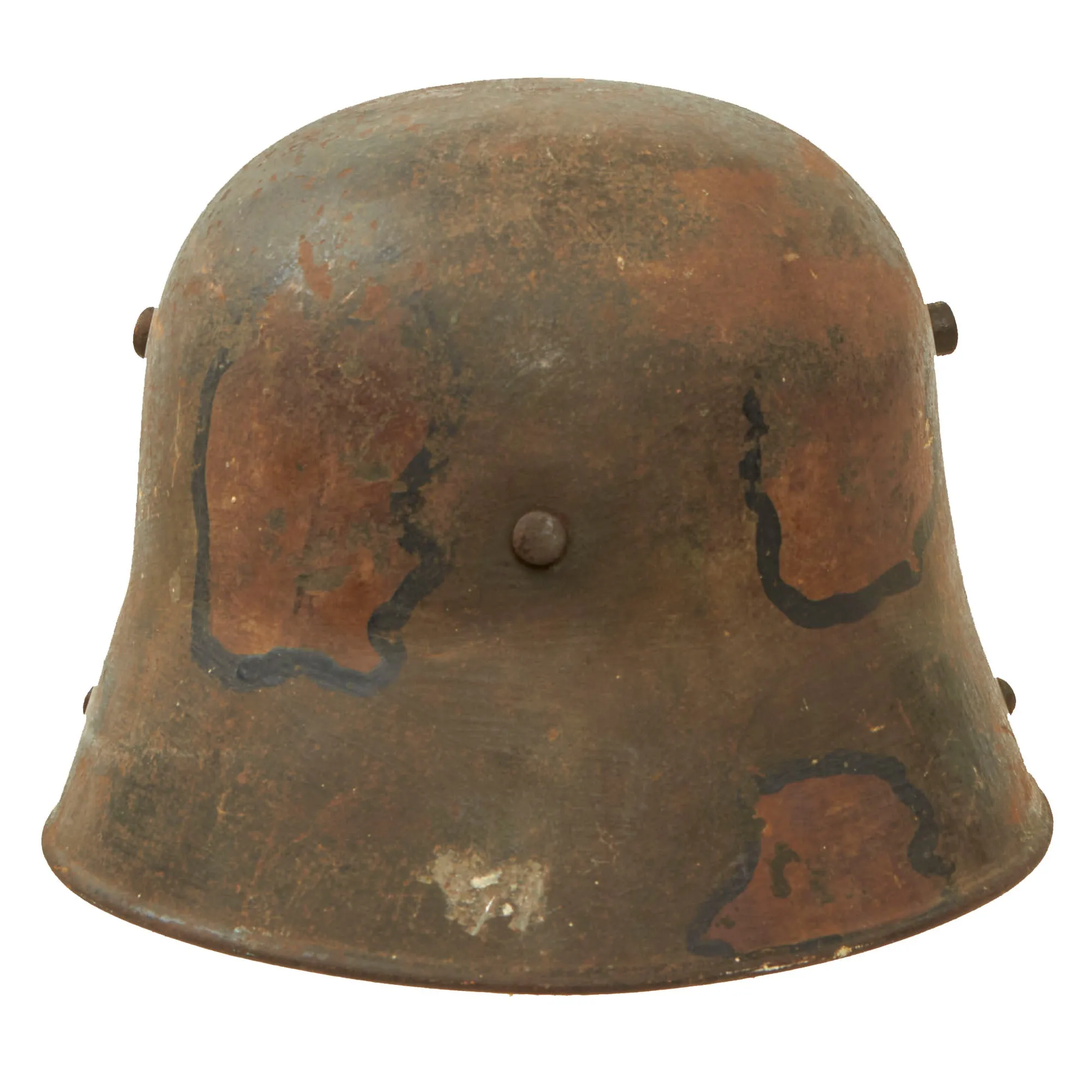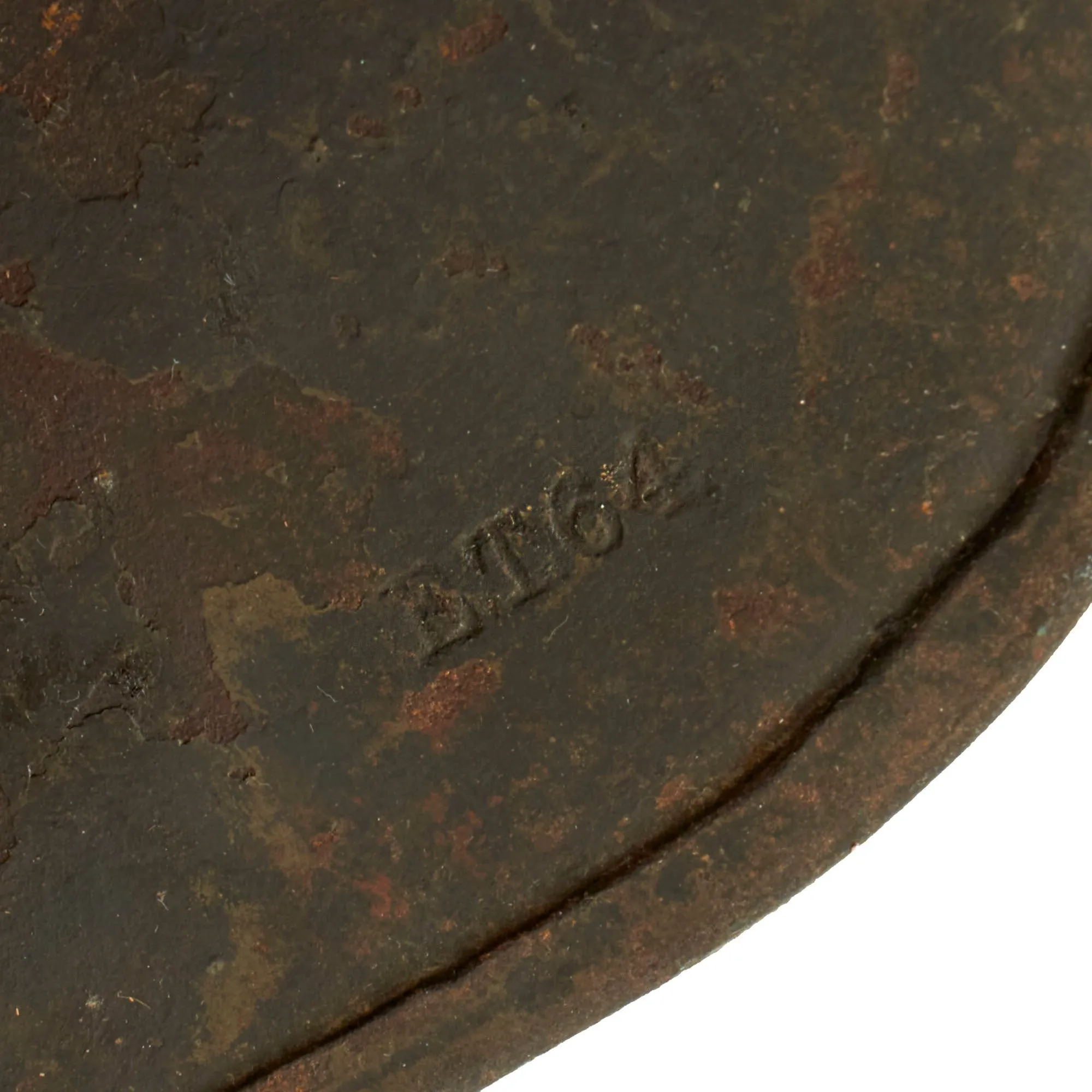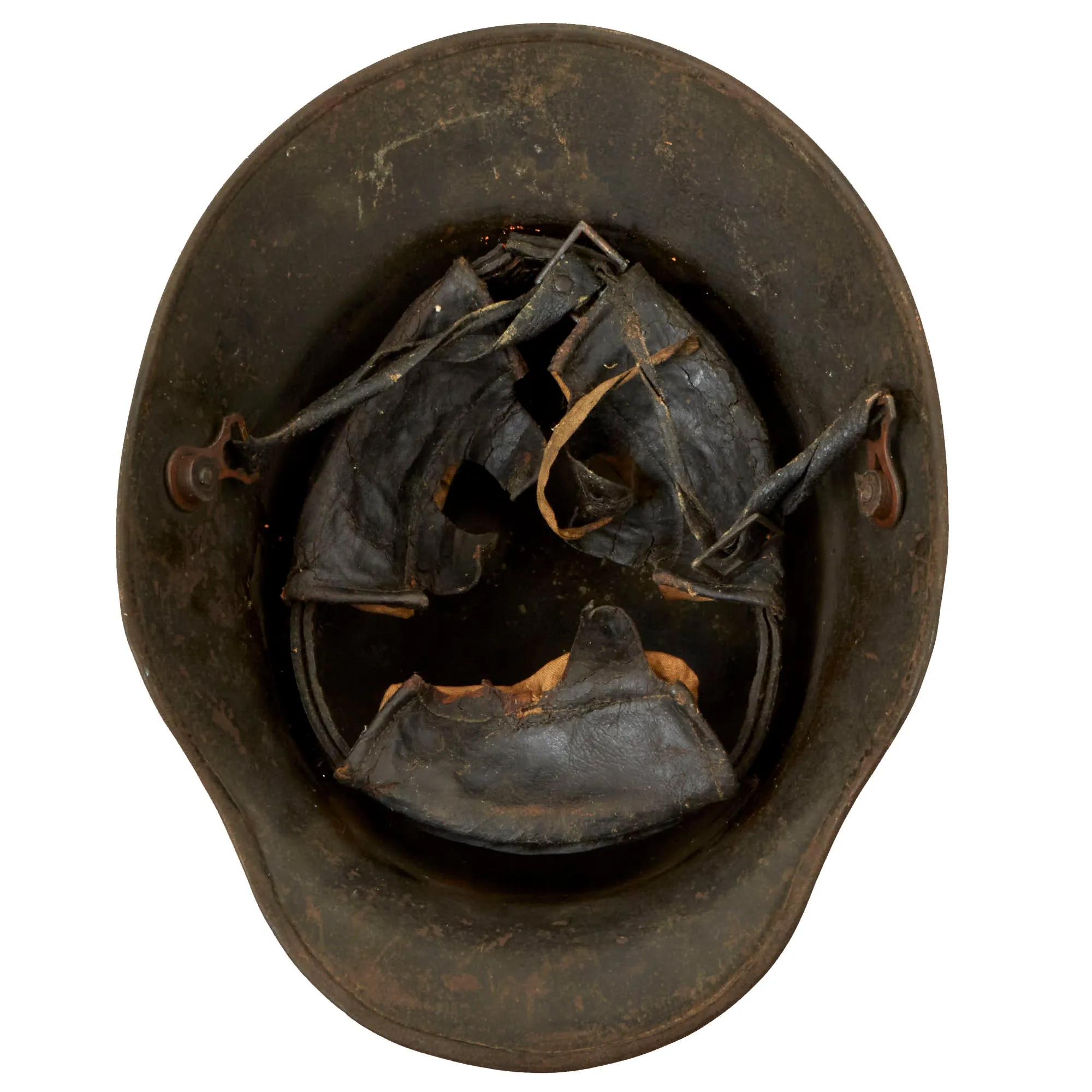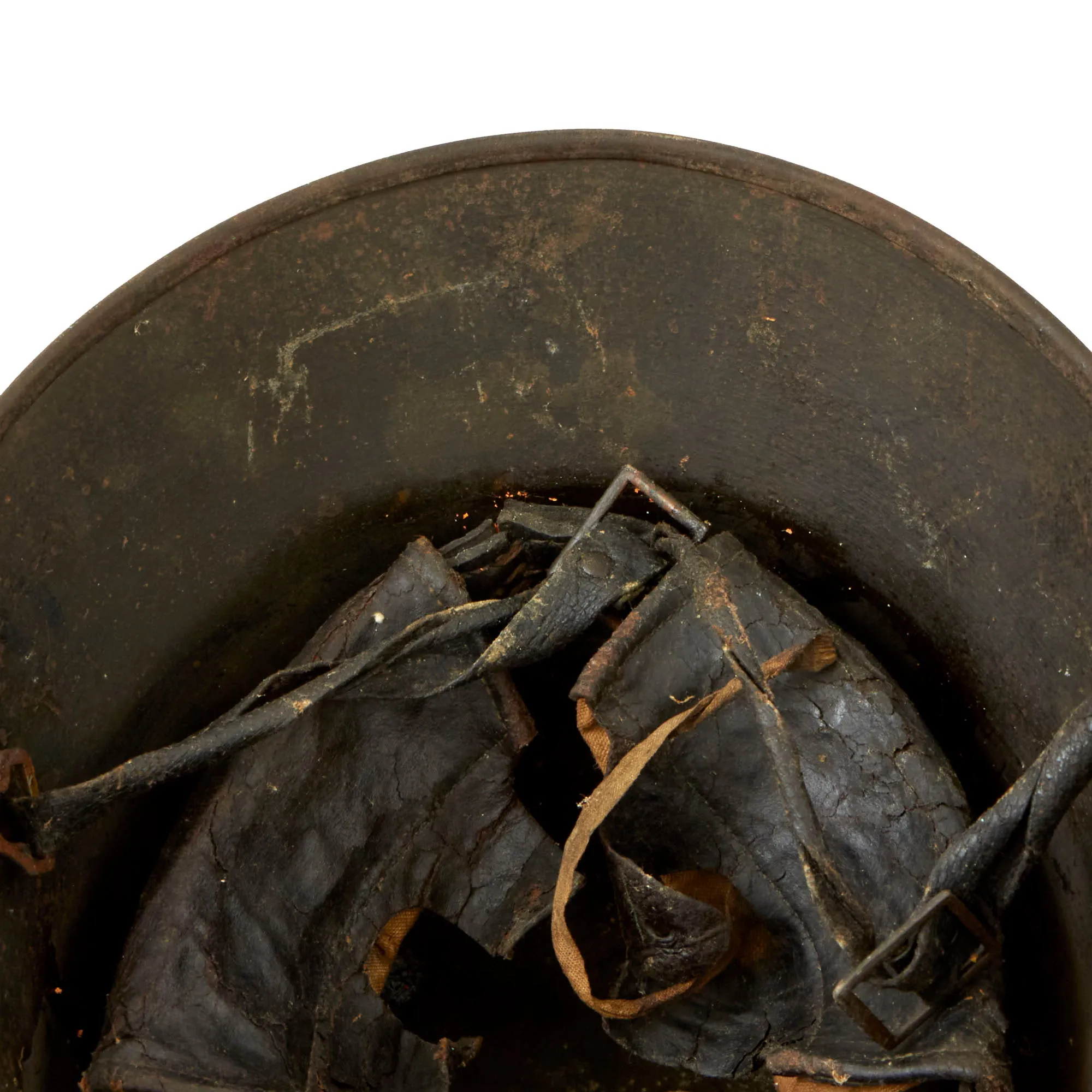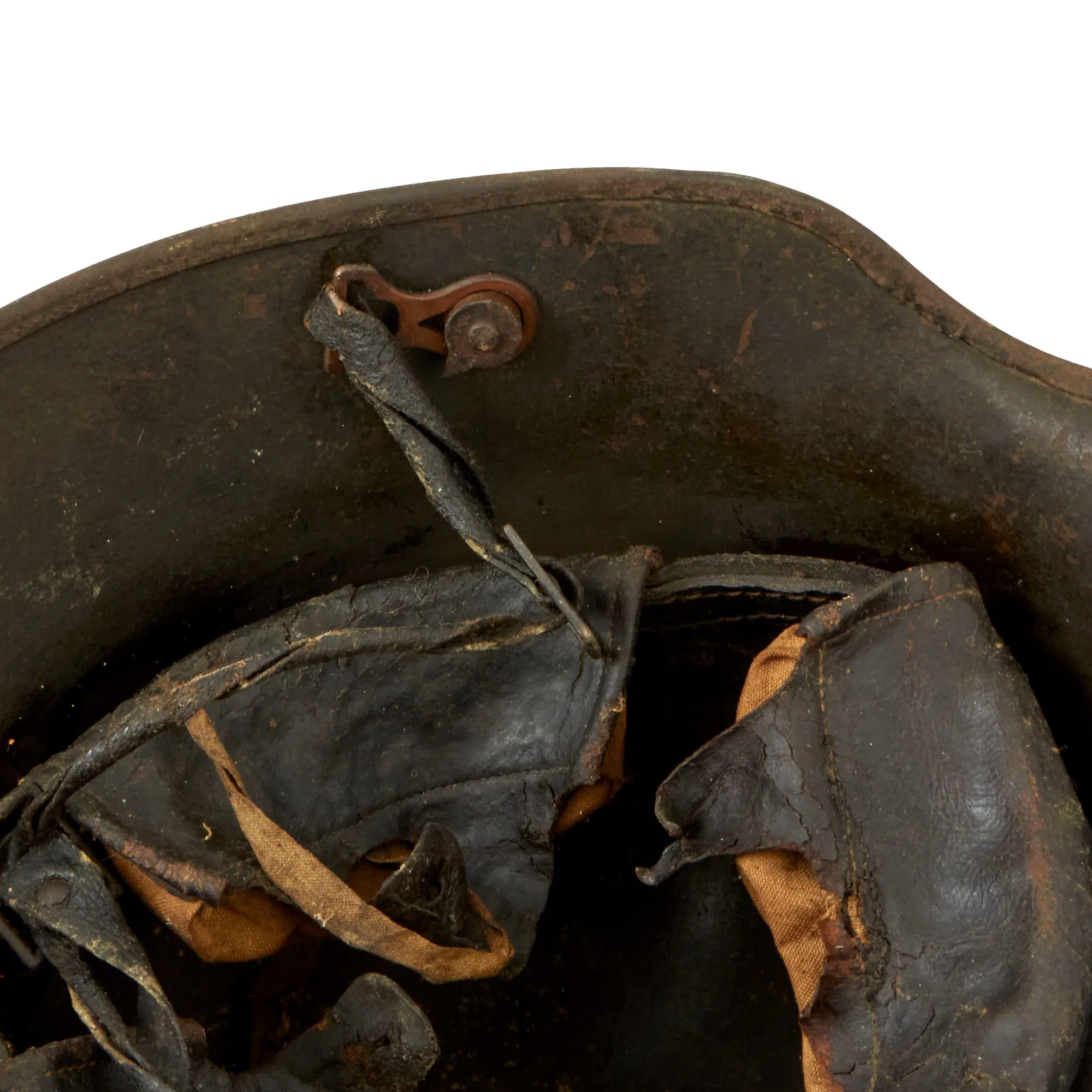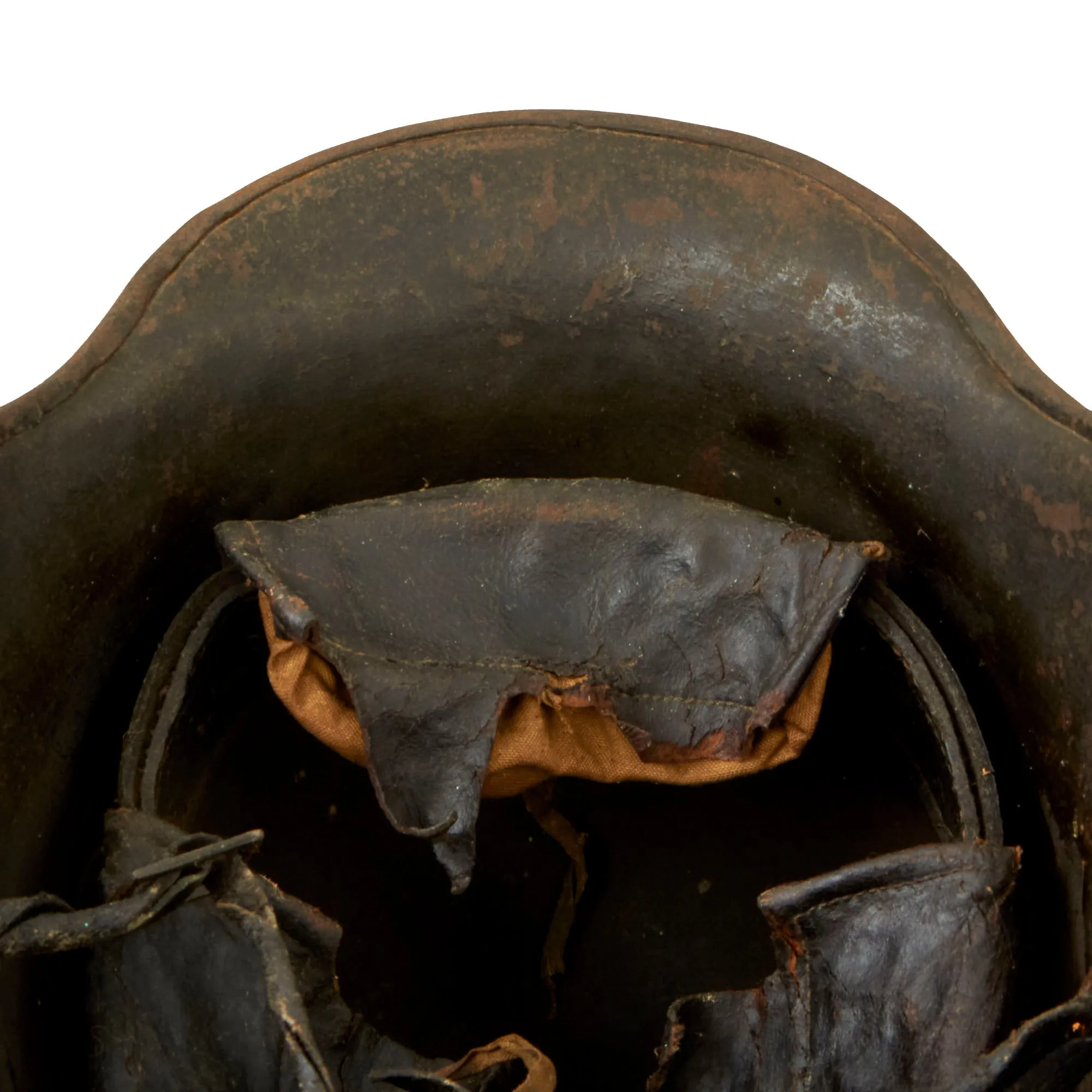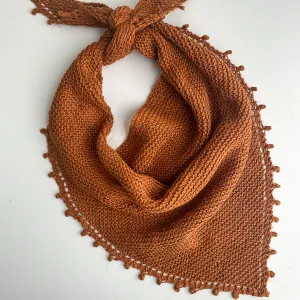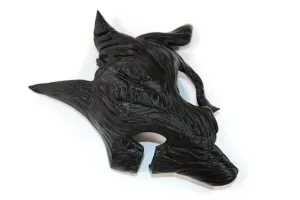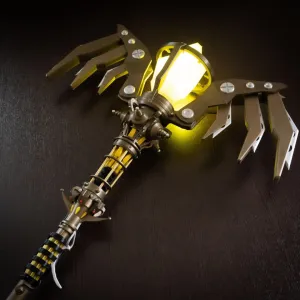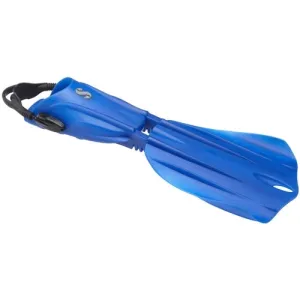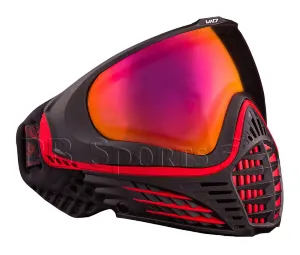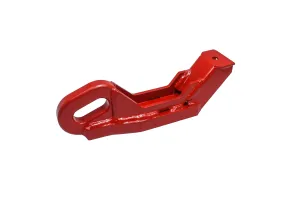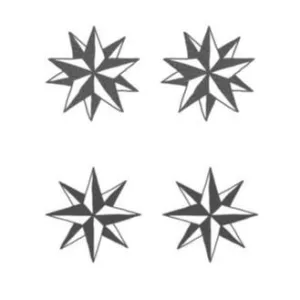Original Item: Only One Available. This is a stunning example of an original M1916 Stahlhelm painted in an attractive turtle-style camouflage, with the original factory paint being partially covered by splotches of black-bordered brown paint, likely meant to resemble fall foliage, which makes sense considering these helmets were painted following Ludendorff’s July 1918 Camouflage Directive. What is very off-putting about this example at first glance is the condition of the liner & chinstrap. The leather of the liner & chinstrap is very sticky & warped. The chinstrap has been twisted around itself several times over. What may appear to be a peculiar case of wear & tear may actually be chemical damage.
We believe that this helmet sat camouflaged in a battlefield, being exposed to chlorine, phosgene, or mustard gas, resulting in the damaged liner. From our research and the state of German leather gas masks after being exposed, we believe the leather of the liner went through a similar situation. This is on top of the helmet being an M1916, meaning it was worn from 1916-1918, painted with a camouflage pattern, and then worn until it was exposed to chemical gas. It has miraculously retained its liner and chinstrap, which in most other cases would have been torn out and discarded at the sight of the damage.
Despite our belief, we can not confirm it 100% as we were not there. But we are confident in our assessment.
The helmet still has both the dome headed chinstrap retaining rivets, which hold the interior pickelhaube style chin strap lugs in place, with the chinstrap still attached. It also retains both of the extended ventilation side lugs, which are the correct longer type with a small step for the medium size 64 shell. This would ensure proper installation of a Stirnpanzer brow plate regardless of shell size.
The liner split pins are all retained, although they are a bit loose due to the damage the liner faced. The paint of the pins is correct to the camouflage paint however, so they and the liner are certainly original to the helmet.
The shell is stamped E.T. 64. indicating that Eisenhüttenwerke Thale A.G., in Thale /Harz manufactured it. This company made shells in sizes 60 - 68 for the war effort. Size 64 is a nice medium large size that can accommodate liners from 56cm to 57cm or US 7 to 7 1/8. The top of she shell has a rolling mill mark but is unable to be read.
This is a fantastic example of a genuine camouflage painted German helmet with possible chemical damage and comes ready to display!
History of the M16 Helmet
The Stahlhelm was introduced into regular service during the Verdun campaign in early 1916.
The M1916 design had side-mounted horn-like ventilator lugs which were intended to be support for an additional steel brow plate or Stirnpanzer, which only ever saw limited use by snipers and trench raiding parties, as it was too heavy for general use.
The shell came in different sizes, from 60 to 68, with some size 70s reported. The suspension, or liner, consisted of a headband with three segmented leather pouches, each holding padding materials, and leather or fabric cords could be adjusted to provide a comfortable fit. The one-piece leather chinstrap was attached to the shell by M1891 chinstrap lugs, the same kind used in the Pickelhaube helmet.
The M1916 design provided excellent protection: Reserve Lieutenant Walter Schulze of 8th Company Reserve Infantry Regiment 76 described his combat introduction to the helmet on the Somme, 29 July 1916:
"... suddenly, with a great clanging thud, I was hit on the forehead and knocked flying onto the floor of the trench... a shrapnel bullet had hit my helmet with great violence, without piercing it, but sufficiently hard to dent it. If I had, as had been usual up until a few days previously, been wearing a cap, then the Regiment would have had one more man killed."
But the helmet was not without its flaws. The ventilator horns often let cold air in during the winter, requiring the wearer to block the vents with mud or fabric. The large, flared skirt tended to make it difficult for soldiers to hear, distorting surrounding sounds and creating an echo when the wearer spoke.
Originally painted Feldgrau (field grey), the Stahlhelm was often camouflaged by troops in the field using mud, foliage, cloth covers, and paint. Official issue cloth covers in white and grey appeared in late 1916 and early 1917. Camouflage paint was not formally introduced until July 1918, when German Army Order II, No 91 366, signed by General Erich Ludendorff on 7 July 1918, outlined official standards for helmet camouflage. The order stipulated that helmets should be painted in several colors, separated by a finger-wide black line. The colors should be relevant to the season, such as using green, brown and ocher in summer.
After the effectiveness of the M1916 design was validated during the 1916 campaigns, incremental improvements were subsequently made.




